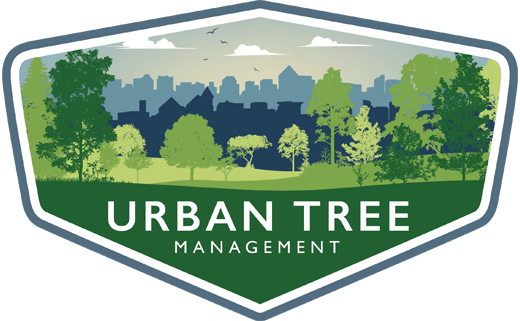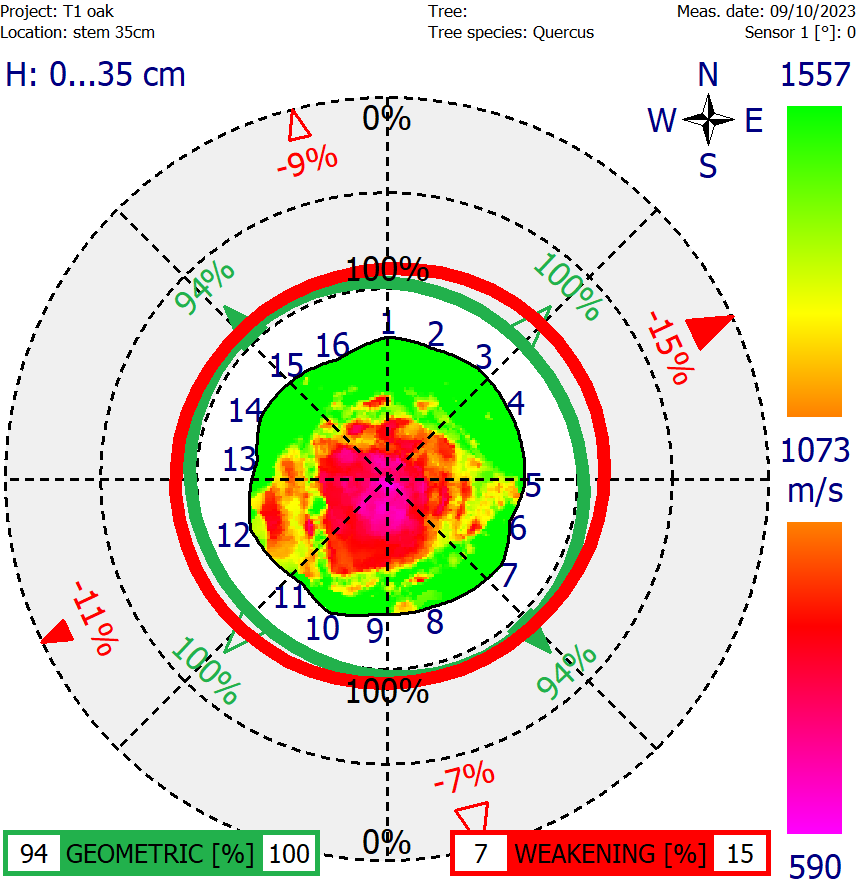Decay detection using sonic tomography
The Arbotom® is used in advanced tree risk assessments. By evaluating the condition of the wood quality in the entire cross section, strength loss due to decay can be assessed. That data is then used to gain a better sense of what is happening to the tree and how that might affect the likelihood of failure component in a risk assessment.
What is Sonic tomography
Sonic tomography is a minimally-invasive diagnostic tool used to quantify decay across a single 2-D transverse plane (uniplanar) in a stem cross-section by transmitting sound waves from manually placed emitters (measuring points) to an equal quantity of receivers (Rinn, 2014). By measuring the time of flight of the stress wave impulses through the wood between multiple sensors, the interfacing software calculates the stress wave velocities across the cross-section and produces a tomogram of the results. The basis for determining the extent of damage, such as decay or a cavity is a measurement of the transmitter to emitter response delay. A relatively fast transmission of a wave from sensor to sensor suggests intact wood, and conversely, a relatively slow transmission suggests damage or inconsistencies (such as delaminated wood fibres) (Göcke, 2017). The resultant velocity values are based on an expected travel path of stress waves, deviations of the waves from an assumed straight-line path (delayed time) across the cross-section from sensor to sensor can occur due to their inability to traverse across degraded/delaminated wood, as it is suggested that waves can only travel through intact wood (Rinn, 2014). These deviations are reflected in the tomogram by ascribing a colour relating to relative flight time ranges to areas of the cross-section by velocity analysis of the intersecting assumed straight-line paths (Göcke, 2017) (Figure 1).
When is Tree Tomography Scans needed ?
Sonic tomography is an impressive diagnostic tool for evaluating decay patterns and helps to inform prognosis in tree risk management. Additionally, using multiple decay detection tools, when appropriate, such as micro-drilling to corroborate findings by corresponding the results of each.
We also use additional software for determination and comparative evaluation of windload and the the safety effect of reduction prunin, stability reduction by deteriorations in trunk/branch cross-sections, tipping-stability reduction by root decay and/or trenching.
This system can be used in a number of contexts, for instance:
- To inform the risk management of individual trees,
- Providing evidence to support TPO applications,
- To inform the management of aged or veteran trees,
- To provide a baseline for the monitoring of progressive decay.
Sonic tomography used in advanced tree risk assessments can help meet your duty of care
If you need expert tree diagnostics, get in touch and we’ll send a free quote within 24 hours

Urban Tree Management operate throughout the Greater Manchester, Lancashire, Cheshire, Merseyside and Nationally for tree-related projects of all sizes.
Popular Tree Surveys
Arboricultural Impact Assessment
Arboricultural Method Statement
Tree inspection & Risk Assessment
Contact Us
We will get back to you as soon as possible
Please try again later


